NCERT Solutions Class 9 Science Chapter 5 - The Fundamental Unit of Life
NCERT Solutions for Class 9 Science Chapter 5 – The Fundamental Unit of Life are essential for understanding key Biology concepts in the CBSE curriculum. These well-structured answers help students grasp topics like cell structure, cell organelles, types of cells, and more. Designed as per the latest syllabus, these solutions strengthen conceptual clarity and improve exam preparation. Ideal for revision and practice, they encourage logical thinking and scientific understanding, making them a valuable study tool for scoring well in Class 9 Science exams.
NCERT Solutions Class 9 Science – The fundamental unit of life – Exercise Images
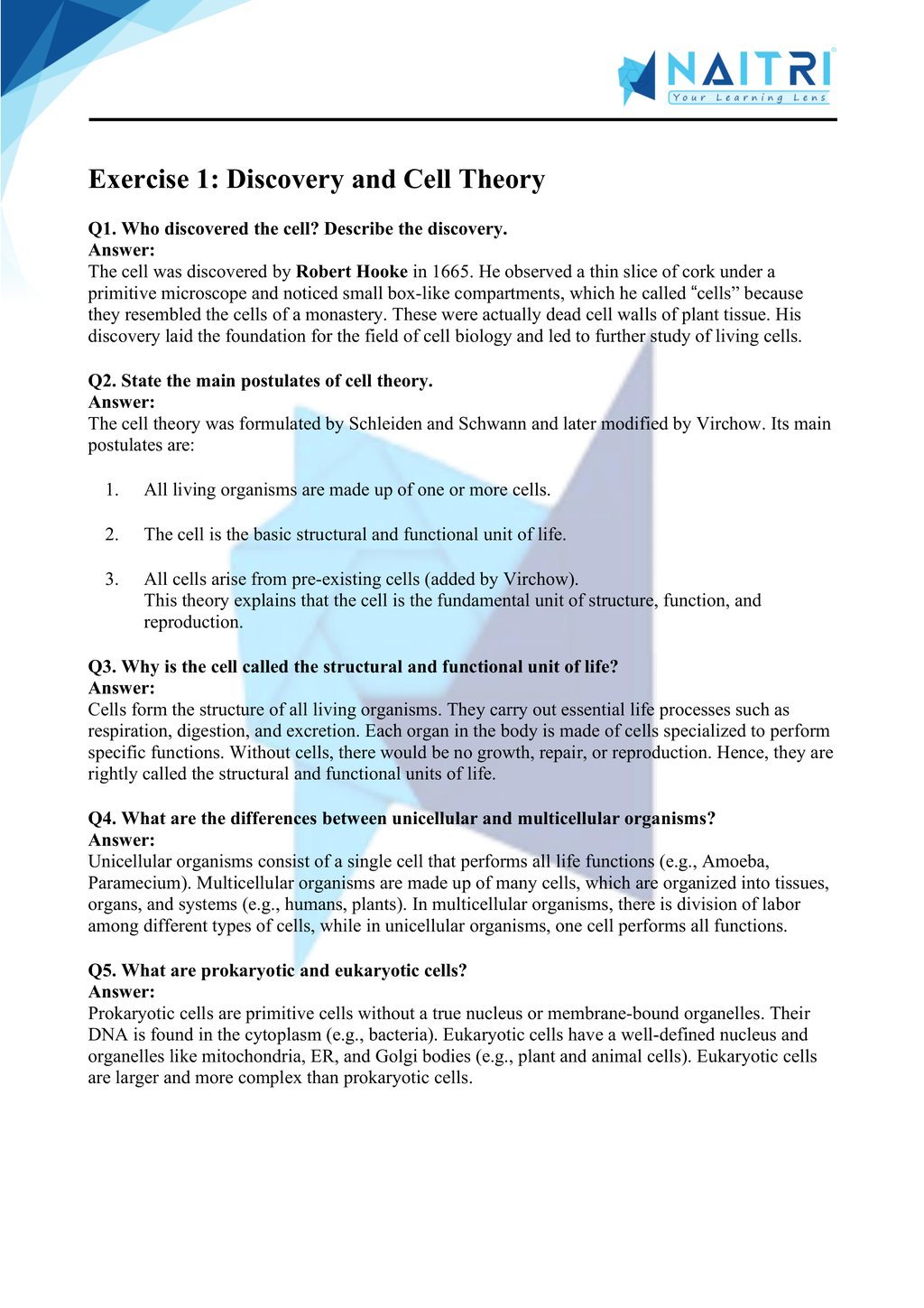
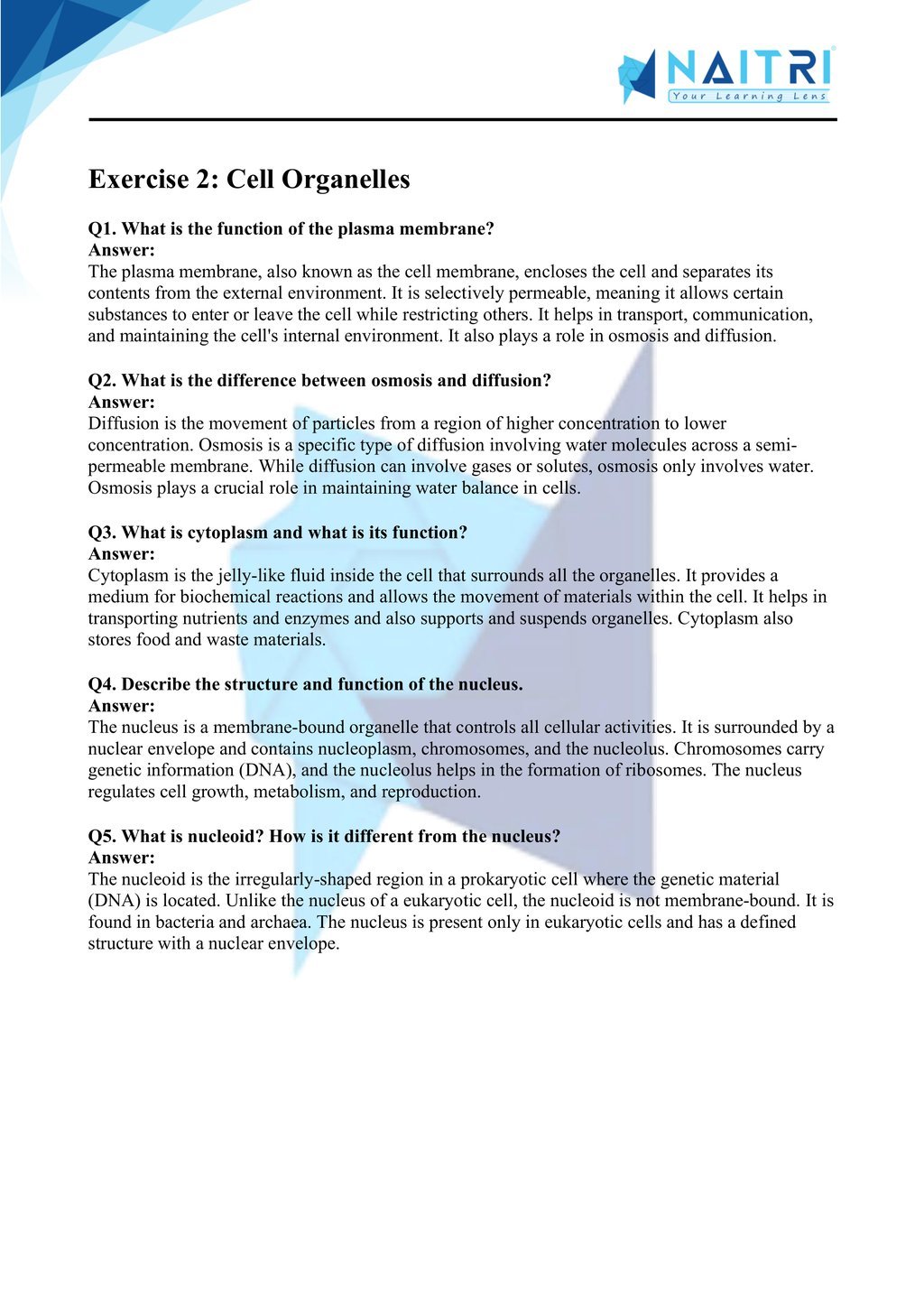
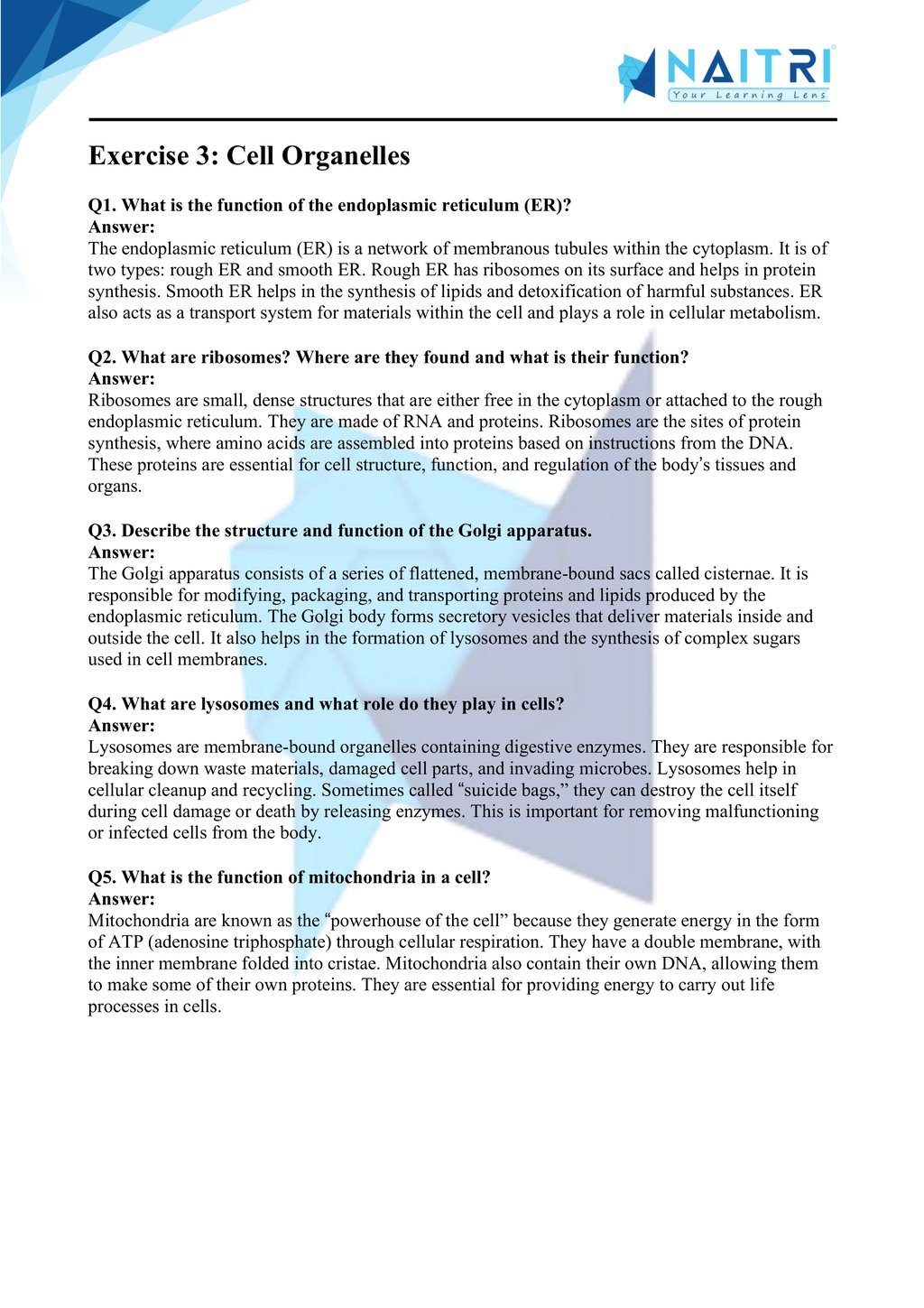
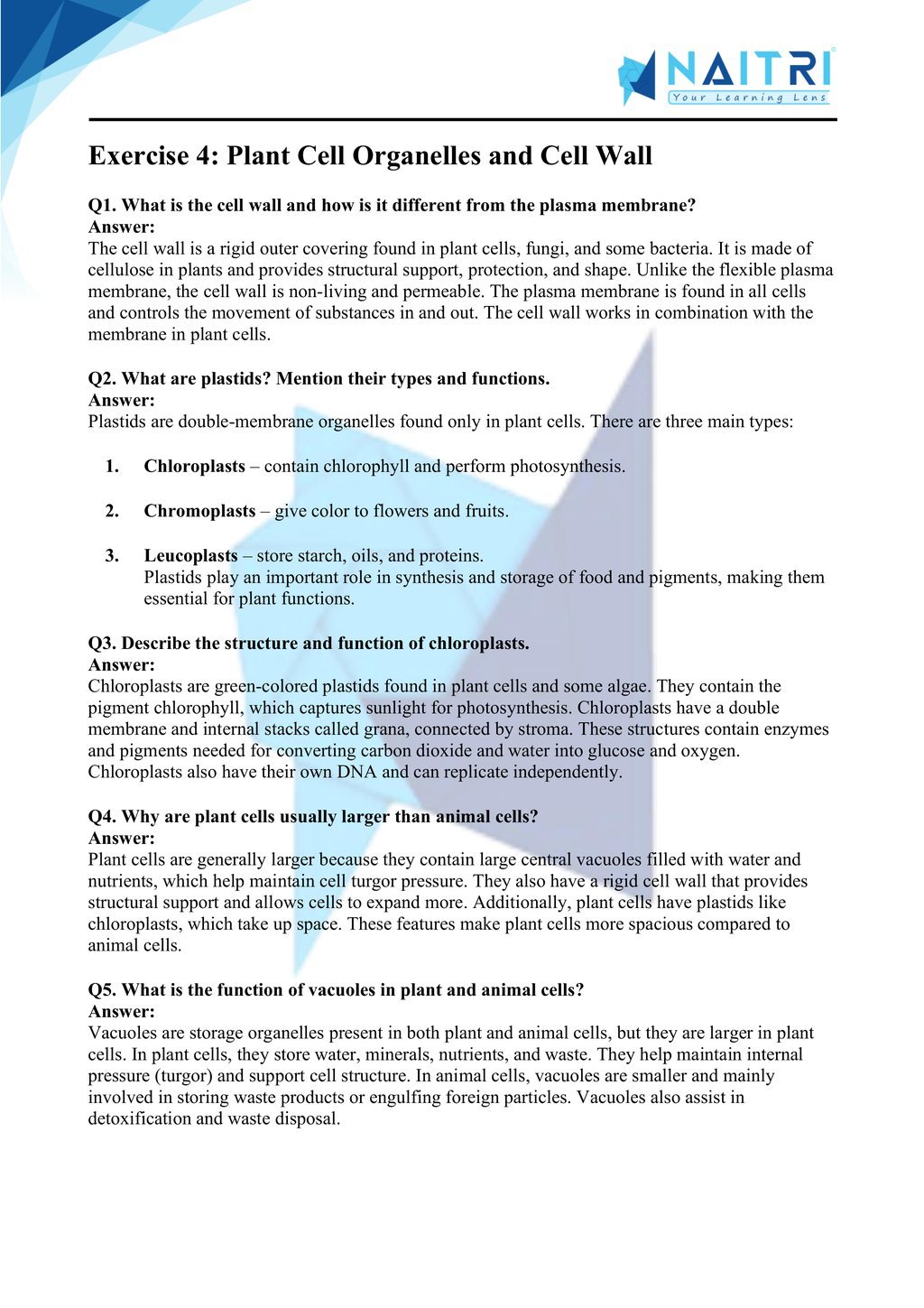
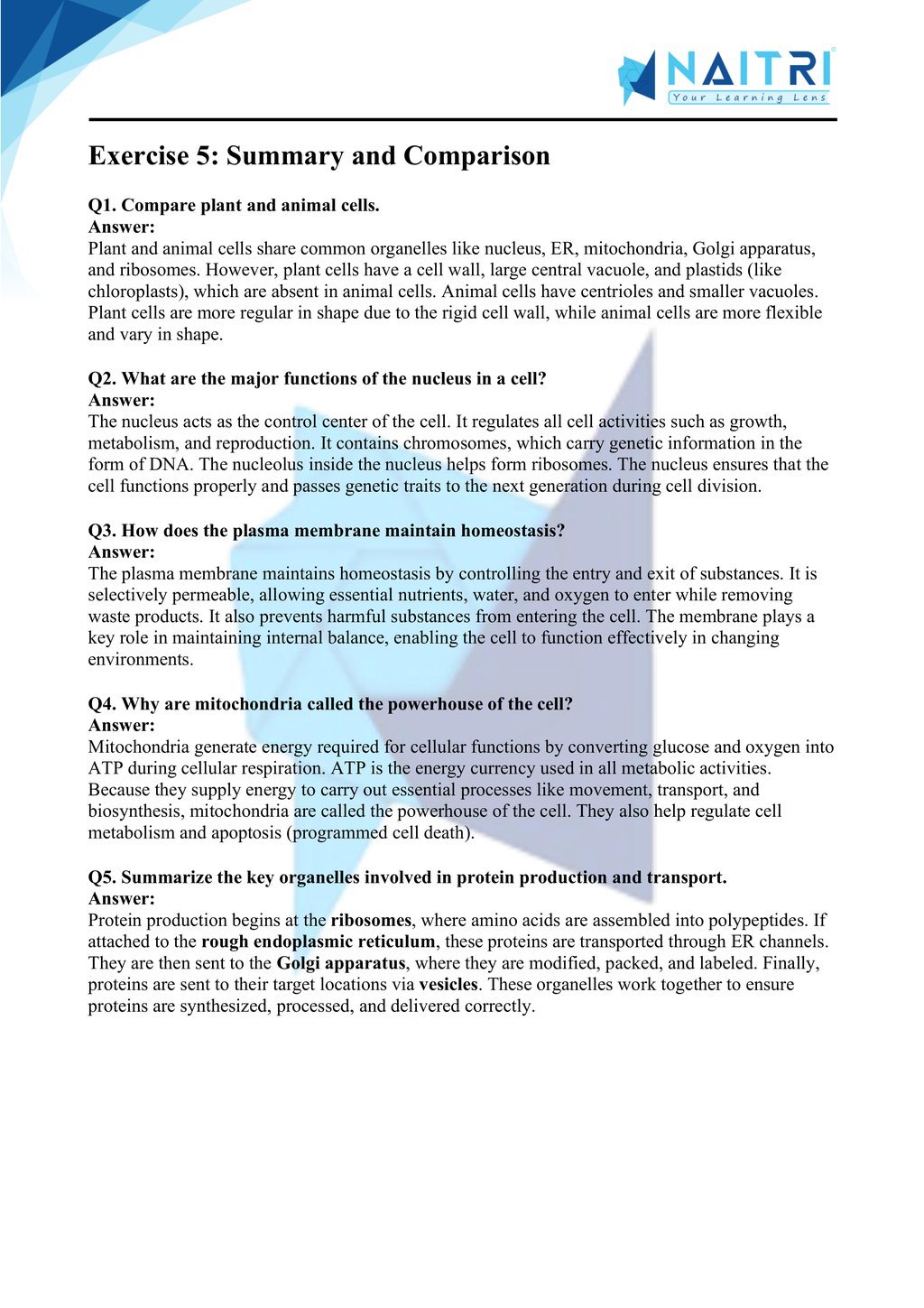
Experience Science Like Never Before – With AR!
Understanding The Fundamental Unit of Life is now more exciting and immersive! With the NAITRI App, you can explore complex science concepts through Augmented Reality (AR). Zoom into cells, interact with organelles, and see life’s building blocks in action — right in front of you. Our AR-powered lessons make learning interactive, 3D, and fun, helping you retain concepts better and enjoy every topic.



Visualize . Interact . Understand . The future of learning is here
The Fundamental Unit of Life – Important Questions with Answers
1. Who discovered the cell and when?
Answer: Robert Hooke discovered the cell in 1665 while observing a cork slice under a microscope.
2. What is a cell?
Answer: A cell is the basic structural and functional unit of life.
3. Name the smallest and the largest cell.
Answer:
Smallest – Mycoplasma
Largest – Ostrich egg
4. What are the main types of cells based on structure?
Answer: Prokaryotic cells and Eukaryotic cells.
5. Differentiate between prokaryotic and eukaryotic cells.
Answer:
Prokaryotic cells do not have a true nucleus or membrane-bound organelles.
Eukaryotic cells have a well-defined nucleus and membrane-bound organelles.
6. What is the function of the plasma membrane?
Answer: It controls the movement of substances into and out of the cell and provides protection.
7. What is osmosis?
Answer: Osmosis is the movement of water molecules from a region of higher water concentration to a region of lower water concentration through a semi-permeable membrane.
8. What are the three types of solutions related to osmosis?
Answer:
Hypertonic solution
Hypotonic solution
Isotonic solution
9. What is cytoplasm?
Answer: Cytoplasm is the jelly-like substance between the nucleus and the cell membrane where cell organelles are suspended.
10. Name any five cell organelles.
Answer: Nucleus, Mitochondria, Golgi apparatus, Endoplasmic reticulum, Lysosomes.
11. What is the function of the nucleus?
Answer: The nucleus controls all activities of the cell and contains genetic material (DNA).
12. What are chromosomes?
Answer: Chromosomes are thread-like structures in the nucleus made of DNA that carry hereditary information.
13. Why is the mitochondrion known as the powerhouse of the cell?
Answer: Because it releases energy in the form of ATP during cellular respiration.
14. What is the function of ribosomes?
Answer: Ribosomes are the site of protein synthesis in the cell.
15. What is the function of the Golgi apparatus?
Answer: It modifies, sorts, and packages proteins and lipids for transport within or outside the cell.
16. Differentiate between rough and smooth endoplasmic reticulum.
Answer:
Rough ER has ribosomes on its surface and is involved in protein synthesis.
Smooth ER lacks ribosomes and is involved in lipid synthesis.
17. What is the role of lysosomes?
Answer: Lysosomes contain digestive enzymes that break down waste materials and worn-out cell parts. They are also called suicide bags of the cell.
18. What are plastids? Name its types.
Answer: Plastids are cell organelles found in plant cells.
Types: Chloroplasts, Chromoplasts, and Leucoplasts.
19. What is the function of chloroplasts?
Answer: Chloroplasts carry out photosynthesis and contain the green pigment chlorophyll.
20. What is the role of the vacuole?
Answer: Vacuoles store nutrients, waste products, and provide turgidity to the cell.
21. Differentiate between plant and animal cells (any two points).
Answer:
Plant cells have a cell wall; animal cells do not.
Plant cells have chloroplasts; animal cells do not.
22. What is the function of the cell wall?
Answer: The cell wall provides shape, strength, and protection to plant cells.
23. What is ATP?
Answer: ATP (Adenosine Triphosphate) is the energy currency of the cell, produced mainly in mitochondria.
24. Why do plant cells have large vacuoles?
Answer: To maintain osmotic pressure and store essential substances like water and nutrients.
25. What is meant by semi-permeable membrane?
Answer: A membrane that allows only certain substances (usually small molecules) to pass through it.
The Fundamental Unit of Life focuses on the cell as the basic unit of life. Students learn about cell structure, including organelles like the nucleus, mitochondria, and cell membrane. The chapter highlights the differences between plant and animal cells and introduces cell functions like growth, reproduction, and transport. Understanding cell theory encourages scientific thinking and lays the foundation for more advanced biology topics like genetics and physiology.
Related Chapters You May Like
- Chapter – 1 Matter in Our Surroundings
- Chapter – 2 Is Matter Around Us Pure
- Chapter – 3 Atoms and Molecules
- Chapter – 4 Structure of the Atom
- Chapter – 6 Tissues
- Chapter – 7 Motion
- Chapter – 8 Force and Laws of Motion
- Chapter – 9 Gravitation
- Chapter – 10 Work and Energy
- Chapter – 11 Sound
- Chapter – 12 Improvement in Food Resources
Download Naitri App
Easy, Visual Learning — Right on Your Phone
Learn with Augmented Reality! The Naitri app makes CBSE and MP Board concepts interactive and fun — even in low-resource settings. Watch lessons, complete homework, take tests, and track progress — all in one place. Anytime. Anywhere.
Available on








